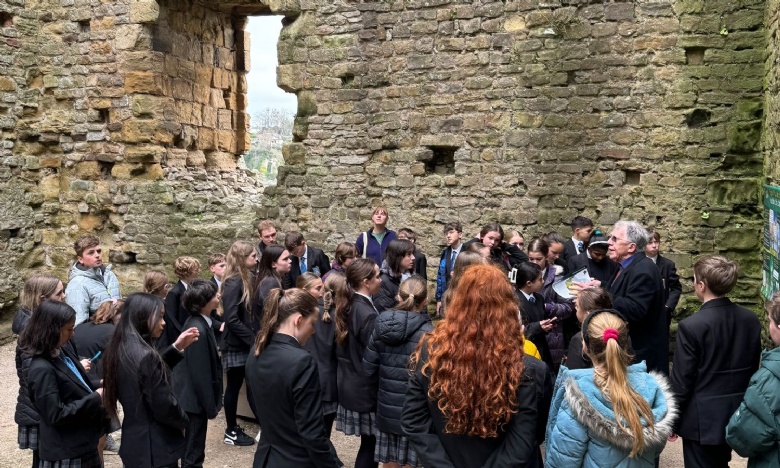Local Castles Under Siege!

Earlier this term, we took 189 students to the wonderful castles of Berkeley and Chepstow. At Berkeley, they enjoyed an expert-led tour, while at Chepstow, they were challenged to apply their historical skills and knowledge to identify and explain the use of various castle features. Since the trip, students have been producing excellent work—through sketches and photographs—to demonstrate their learning.
It was a busy task, somewhat akin to planning a castle siege, I suspect, but both students and staff ensured everything ran smoothly. Their energetic enthusiasm was infectious, and they represented our school with aplomb. As part of the trip, students were asked to sketch or photograph features of the castles for use in lessons. So far, their efforts have showcased not only their creativity but also their developing historical skills, proving the trip to be a valuable and worthwhile experience for all.
Margot Holland has provided a wonderful review as part of this task below :
“The castle towers imperiously over the huge lawn, with its short, neatly cut grass perfectly levelled and shaded by beautiful trees with thick, luscious leaves. A set of stone steps leads to the inner bailey, an extra defence that expelled invaders. Thick bushes grow against the walls, exquisitely framing the perfectly placed benches that overlook the lawn, the small brook, and the wide meadow that once would have been stained by the blood of enemy soldiers shot from the arrow slits at the top of the towers.
Long fingers of ivy creep up the towers, stretching ever closer to the battlements. Tastefully carved oak doors sit beneath a black clock, supported on a tower hidden behind the huge gates. In the ceiling of the large tunnel are four expertly placed murder holes, or meurtrières. These would have been used to pour or throw things on enemy soldiers—such as boiling water, hot sand, rocks, and occasionally boiling oil, although reports of the latter are less frequent due to the high cost of oil at the time.
This castle was cleverly placed to overlook the vast surrounding valleys, allowing a 360-degree view of any potential attacks. The trees that currently block the town of Berkeley from view would not have existed when Berkeley Castle was a vital stronghold and the town a small marketplace.
During the British Civil War in the 1640s, Berkeley Castle withstood a three-day siege before it was captured by Parliamentary forces. It was also one of the very few castles in Britain that survived the slighting ordered by Oliver Cromwell to prevent further Royalist defence. However, the castle has recovered and is currently lived in by Lord and Lady Berkeley and their family. The heir to the castle is Charles Berkeley, and his heir is Mary Berkeley. It was very unusual for women to inherit estates—a distant cousin gained the castle instead of twelve women who were direct heirs.”
— Margot Holland, 7F2
